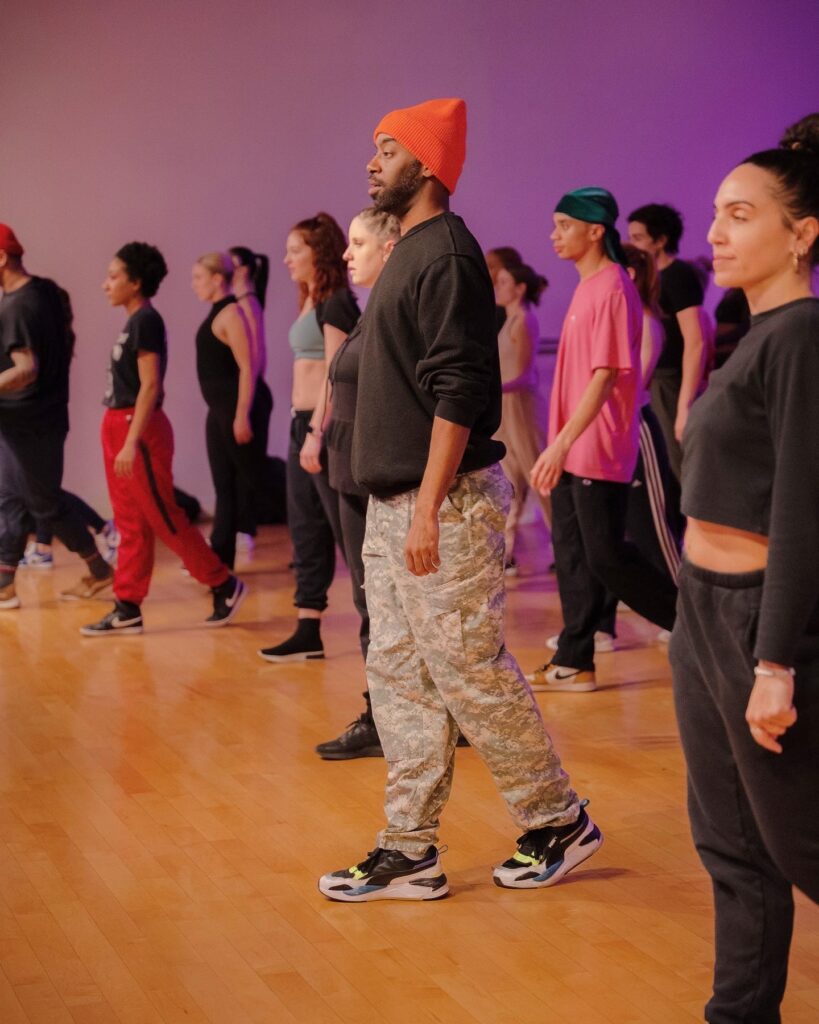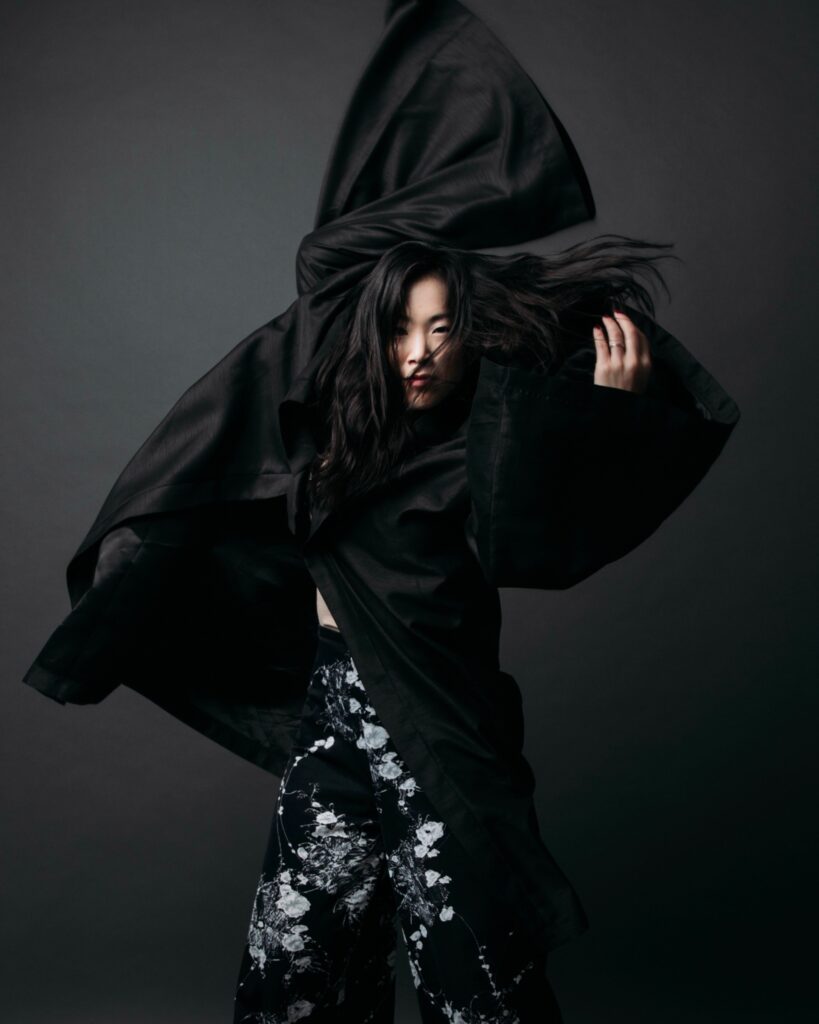
Training for solo and group performances comes with a unique set of technical and artistic demands. By focusing on key areas such as execution, spatial awareness, and musicality, dance educators can help students attain confidence and develop their skills in self-expression and coordination.
Execution
Dancing solo allows students artistic freedom. “It’s just about you [the dancer]. You have flexibility in your artistic choices, timing, musicality, and textures,” says Sabrina Phillip, a choreographer who’s worked at numerous dance studios, workshops, and conventions globally.
She adds that a solo should be custom made for the student you’re working with. At the beginning of the choreographing process, Phillip asks to see videos of the soloist’s past performances. “Sometimes they don’t even see the things they may be strong at.”
Phillip often puts the dancer’s strengths above her own: “If someone is really a righty, I’m going to do my best to put that right side in [more within the choreography] instead of the left. Sometimes that’s more difficult for me, but that’s my job. As choreographers we have a responsibility to the students to show their best self onstage.”
Dominique Kelley, a choreographer with over 30 years of experience in the industry, agrees and advises that when it comes to creating a solo, the dancer’s ability should come first and the choreography and vision for the piece second. “One should always seek to find soloists’ strengths while pushing them to dig a little deeper to improve on emotion, technique, and overall performance.”
Conversely, performing in a group calls for zooming out of oneself and into the bigger picture. To ensure the highest level of execution in a group number, Phillip suggests having dancers perform in the studio as they would onstage. “Promote the moments that you want to be more or less energetic, start to pull those things up or down. Make them not just do the steps but perform full-out for you. That way, you’re seeing the completed piece and you can gauge, for example, if you need more facial expression from this person, less from that person, and so on.” A great tactic for making students comfortable performing is to bring in a small audience to dance in front of. Having their colleagues or the studio staff watching helps dancers imagine how they will feel onstage.
To ensure unison within the group, it’s important that each dancer knows the exact counts, angles, and movement details. “They’ll need to know the counts, if there are no counts, and they’ll need to know the timing and have practiced it too,” says Phillip.
Marissa Osato, co-artistic director of Entity Contemporary Dance company, states that it’s better to be “wrong” if it serves the group as a whole: “I’ll never forget when Nina Flagg, a professor at CalArts, said to my group in class, ‘It doesn’t serve you to be right.’ Her point was that even if I was executing the right counts, [being part of a group] meant maintaining cohesion and staying [in sync], even if it deviated from the original score.”
Spatial Awareness
Phillip emphasizes that solos should be choreographed in a way that fits the stage setting as much as the studio setting: “We’re used to sometimes being in a smaller or bigger studio, and the solo isn’t spaced correctly for stage. It’s important to balance the piece so that it makes sense on every stage.”

Chairs are a great way to section off areas in a studio to help the dancer imagine dancing the same choreography in different space limits. Another way to ensure choreography is workable in any space is to use center stage as a “reset,” a neutral point, and have the dancer return to center each time before traveling again. Having soloists rehearse facing away from the mirror also familiarizes them with the stage setting. It encourages them to find different points of focus and navigate the space without being able to see the reflection of the room or themselves. Teachers could also film the solo from an unusual angle (at the side or back), then make the dancer watch it and discuss how they can make the performance exciting from various angles.
Osato stresses the importance of a soloist expanding and contracting within their 360-degree kinesphere (the area surrounding one’s body extending as far as one can reach), even if the audience is only in front. “Awareness of high and low levels, both in spatiality and energetic effort, creates greater dimension for a soloist,” she says.
Another way to increase movement within the 360-degree kinesphere would be to have the dancer or soloist attempt to “touch” as many air particles as possible, experimenting with different planes of motion. It’s easiest for dancers to execute this with improvised movement first, then repeat the exercise with choreography.
When it comes to group performances, Kelley, Osato, and Phillip mention the importance of a dancer’s awareness of other performers. “The dancer’s focus should be on how much space is needed to achieve the fullest range of motion without touching or hitting others in the group,” Kelley advises.
Dancers can practice using their peripheral vision by conducting an exercise where they walk around the room and sharply switch direction every eights while being sure to avoid colliding with others. Making dancers repeat sections involving travel and formation changes could also help build their spatial awareness in a group. Dancers should also be taught to count their steps. “I have my dancers count how many of their steps it takes to get from place to place, so they know approximately how long and how far they should go without over- or undershooting,” Kelley explains.
Additionally, students should know their positions and opposites at any given moment in a group routine. To practice this, teachers can stop the music at any point while running the piece, have dancers freeze, look at where they are in the space, and then make adjustments if they are off. To further test dancers’ spatial awareness in a group, Phillip recommends frequently running the piece away from the mirror. “In the beginning they’re using the mirrors to understand what the formations and transitions look like, but at some point they are going to have to turn it around,” says Phillip. “At that point they’ll need to have practiced enough to navigate the formations and transitions without relying on the mirror.”
However, if spacing issues persist, teachers may need to resort to simplifying the choreography. “I adjust the choreography if they are constantly hitting each other because that means they are not advanced enough to execute it without injury or contact,” Kelley says.

Musicality
Whether it’s training students for solos or group choreography, Kelley encourages dancers to write out lyrics, pick an instrument they connect with, and count the beats. “I love to do ear training with students when it comes to rhythm and rhythmic patterns. If they can scat or clap it out, they’re usually better at transferring that into their bodies.”
Osato has a similar approach. “Have [students] count or beatbox the choreographer rhythms without music,” she advises. “When they have to audibly speak the musicality, they often find where the muddy parts are or the slight differences of where they’re accenting, suspending, or pausing movement.”
Soloists can also be encouraged to lose themselves in the music a bit more by being asked to dance as though they are hearing the song for the first time. Whether it’s training for solo or group performances, Phillip finds it effective to explain musicality right away, while teaching the movement, rather than waiting until the choreography is already set. To do this, she emphasizes the sounds of music used for the piece. “I try to use counts when I can. Sometimes I am not great with counts myself, but I will say: ‘Oh, you know that little tick-tick? I want everybody to hit that tick-tick in a soft way or a hard way.’ I’ll give direction as I’m teaching it. I find it’s much easier to teach musicality by giving specific direction and emphasizing the music as I go. Muscles have memory and I feel if you try to do it later, it’s a bit more difficult. This goes for both solos or group performances.”





